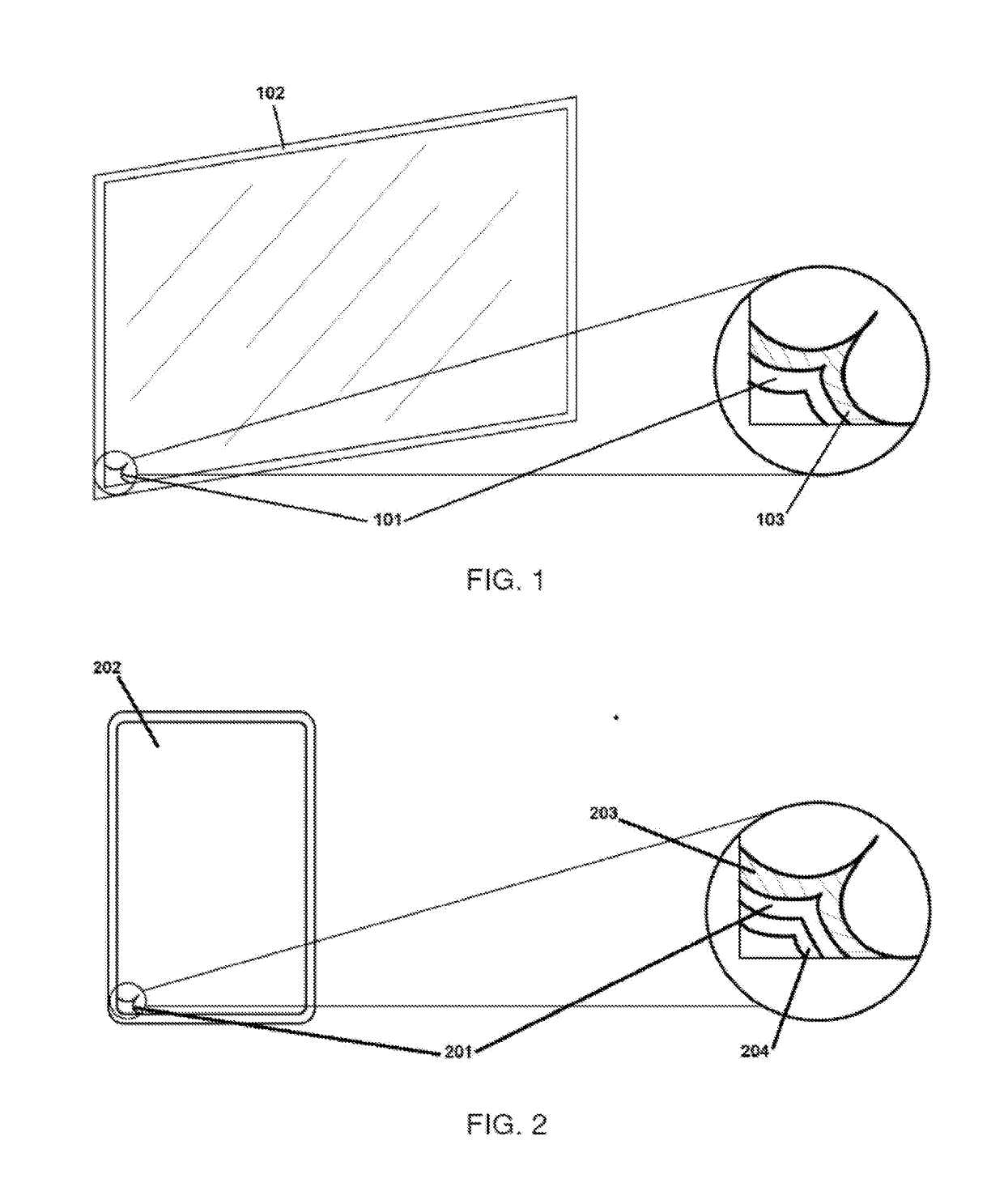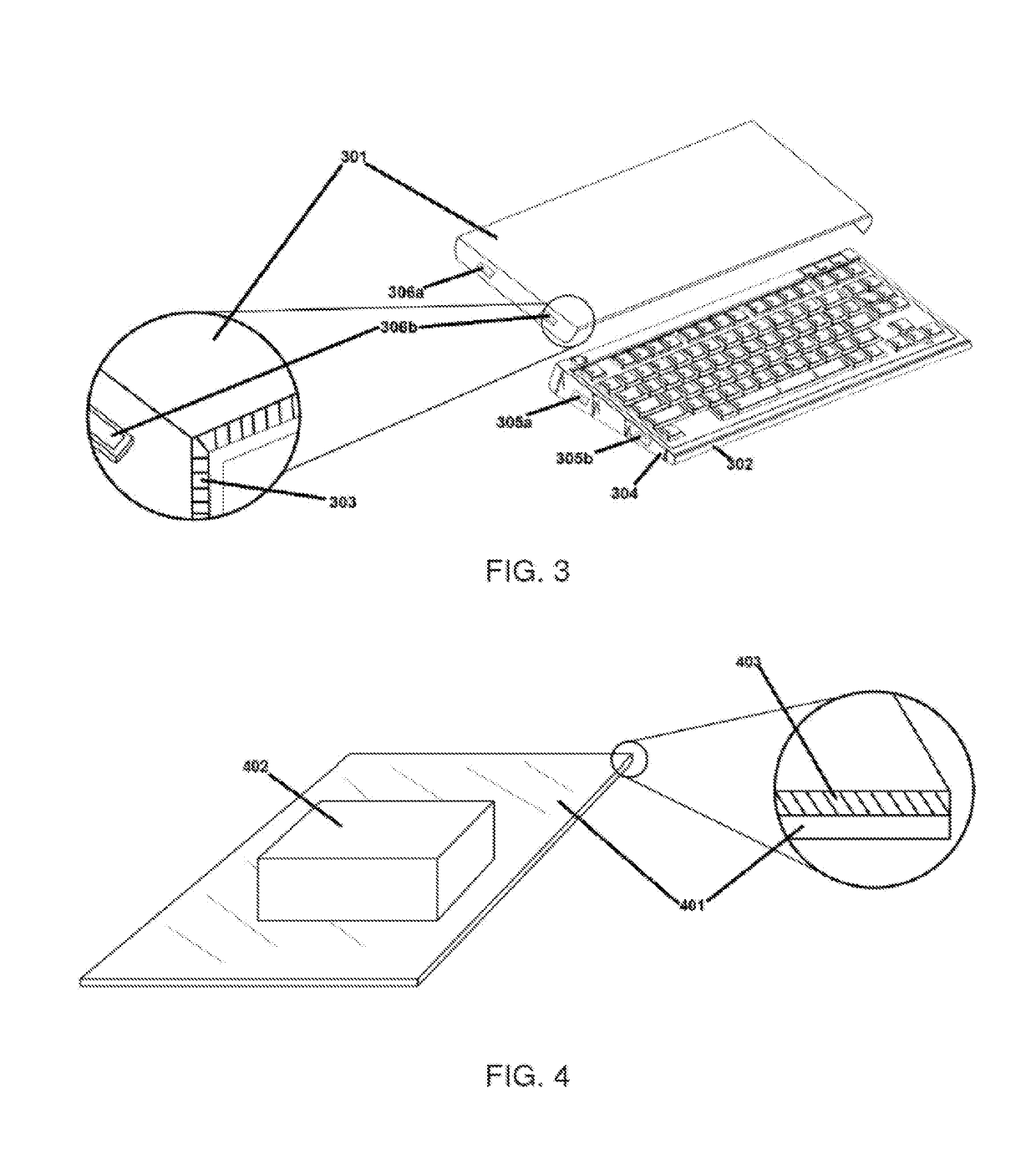Attachable Photocatalytic Device
- Summary
- Abstract
- Description
- Claims
- Application Information
AI Technical Summary
Benefits of technology
Problems solved by technology
Method used
Image
Examples
example implementations
[0030]The FIG. 1 is an embodiment of the photocatalytic device of the present disclosure where the attachable carrier 101 is in the form of a laminate window film and the external solid object is a window 102. The carrier 101 is made of polyethylene terephthalate (PET) and provides additional heat-insulation to the window 102. The outside surface of the carrier is coated with titanium dioxide film 103. There is no adhesive used on the inside surface of the carrier 101. The carrier is attached onto the window on its inside surface via electrostatics. By leveraging the large surface area of the window, this carrier provides a large photocatalytic active surface for killing any airborne microbial making contact to the titanium dioxide film on the carrier. This offers an effective means of antibacterial / antiviral protection for any rooms with large windows, such as classrooms, offices with large windows, and most residential rooms. The sunlight and the regular lighting fixtures or light...
PUM
| Property | Measurement | Unit |
|---|---|---|
| Nanoscale particle size | aaaaa | aaaaa |
| Weight | aaaaa | aaaaa |
| Electrical resistance | aaaaa | aaaaa |
Abstract
Description
Claims
Application Information
 Login to View More
Login to View More - R&D
- Intellectual Property
- Life Sciences
- Materials
- Tech Scout
- Unparalleled Data Quality
- Higher Quality Content
- 60% Fewer Hallucinations
Browse by: Latest US Patents, China's latest patents, Technical Efficacy Thesaurus, Application Domain, Technology Topic, Popular Technical Reports.
© 2025 PatSnap. All rights reserved.Legal|Privacy policy|Modern Slavery Act Transparency Statement|Sitemap|About US| Contact US: help@patsnap.com


